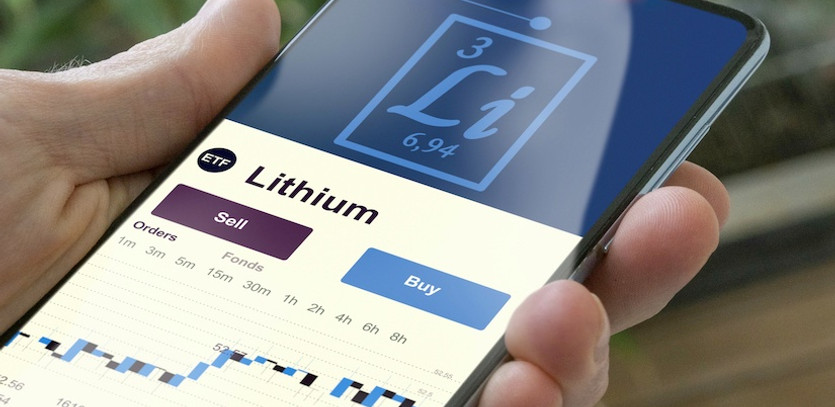Understanding Commodity ETFs
Exchange Traded Funds (ETFs) that invest in tangible commodities like agricultural products, precious metals, or natural resources are known as Commodity ETFs. These funds often specialize in one type of commodity stored physically or are engaged with commodity futures contracts.
There are also commodity ETFs that track the performance of a comprehensive commodity index, incorporating various commodities, combining physical holdings, and derivative positions.
Investors typically turn to commodity ETFs as a hedge against inflation or to profit when the stock market is not performing well. However, similar to all investments, these ETFs also carry a degree of risk and don't promise guaranteed profits.
The Mechanism of Commodity ETFs
Traditional ETFs usually consist of public equities related to a specific economy, sector, or industry. They comprise a collection of securities linked by a similar investment profile. However, commodity ETFs are different. Instead of underlying securities like public stocks, these ETFs consist of futures or asset-backed contracts that track the performance of specific commodities or a group of commodities.
When investors acquire a commodity ETF, they usually do not own the physical asset. Instead, they possess contracts backed by the commodity. Many commodity ETFs leverage through the purchase of derivative contracts, leaving significant portions of uninvested cash. This uninvested cash is often used to buy Treasury securities or other nearly risk-free assets.
Commodity funds usually establish their benchmark indexes, which might be confined to agricultural products, natural resources, or metals. Thus, they may experience tracking error with broader commodity indexes like the Dow Jones AIG Commodity Index. However, a commodity ETF should be passively invested in once the underlying index methodology is in place.
Commodity ETFs have witnessed a surge in popularity as they allow investors to gain exposure to commodities without having to understand the intricacies of futures or other derivative products.
Why Choose Commodity ETFs?
One of the primary reasons to invest in commodities is their strong correlation with inflation. As inflation rises, commodity prices generally rise in tandem, making them an effective inflation hedge.
Commodities typically have weak correlations with other assets such as stocks and bonds. Therefore, including commodities in a portfolio can lower overall risk and volatility and offer diversification. Under favorable market conditions, commodities can potentially yield good long-term returns.
ETFs also offer certain advantages, such as lower operating expenses than open-ended mutual funds, greater transparency, and tax efficiency for taxable portfolios.
Regular investors find ETFs as the best means to invest in commodities, as commodities trading in the futures market is best suited for professionals. Commodity ETFs provide exposure to every type of commodity.
The Drawbacks of Commodity ETFs
Commodity markets are usually in a state of contango or backwardation. When futures are in contango, prices for a particular future are higher in the future than they are now. Conversely, when futures are in backwardation, prices for a commodity are higher now than they are in the future.
When a futures market is in contango, the rolling risk is "negative," causing a commodity ETF to sell lower-priced futures that are expiring and buy higher-priced futures, known as negative roll yield. This process reduces returns and prevents the ETF from accurately tracking the spot price of the commodity.
However, some commodity ETFs use laddered strategies and optimized strategies to dodge the risks presented by a market in contango. These approaches may minimize costs but potentially detract from tracking and benefiting from short-term price movements in the underlying commodity. Thus, they may be more suited for long-term, risk-averse investors.
Moreover, futures-based commodity ETFs have higher expenses due to the constant need to roll over futures contracts. Expense ratios for such ETFs typically range from 0.50%-1.00%, though they vary depending on the fund and commodity.
Examples of Commodity ETFs
Commodity ETFs can track a vast range of commodities. Some focus on particular commodities like precious metals, oil, and natural gas, while others offer a more diversified approach.
For example, the SPDR Gold Shares and iShares Silver Trust are among the largest ETFs that invest in precious metals such as gold and silver. These ETFs are popular as their underlying commodities do not spoil.
In the energy sector, ETFs like the SPDR S&P Oil & Gas Exploration and Production ETF invest in futures contracts since oil and gas cannot be stockpiled like precious metals. This ETF holds a diversified portfolio of oil and gas producing companies.
Diversified commodities ETFs offer investors an option to diversify their investments across various commodities.
The Top Commodity ETFs of July
- Abrdn Bloomberg All Commodity ETF (BCD)
- iShares GSCI Commodity Dynamic Roll Strategy ETF (COMT)
- Abrdn Physical Palladium Shares ETF (PALL)
- Invesco DB Oil ETF (DBO)
- Invesco DB Commodity Index ETF (DBC)
- Invesco DB MS Energy (DBE)
- United States 12-Month Oil (USL)
Conclusion
Commodity ETFs provide an attractive investment option for those looking to diversify their portfolios and hedge against inflation. However, like any investment, understanding the commodity ETFs' intricacies and their market dynamics is critical. The top-performing commodity ETFs of July offer an insight into the potential of these investment instruments. However, the suitability of any investment approach should always be evaluated concerning individual circumstances and investment goals.





